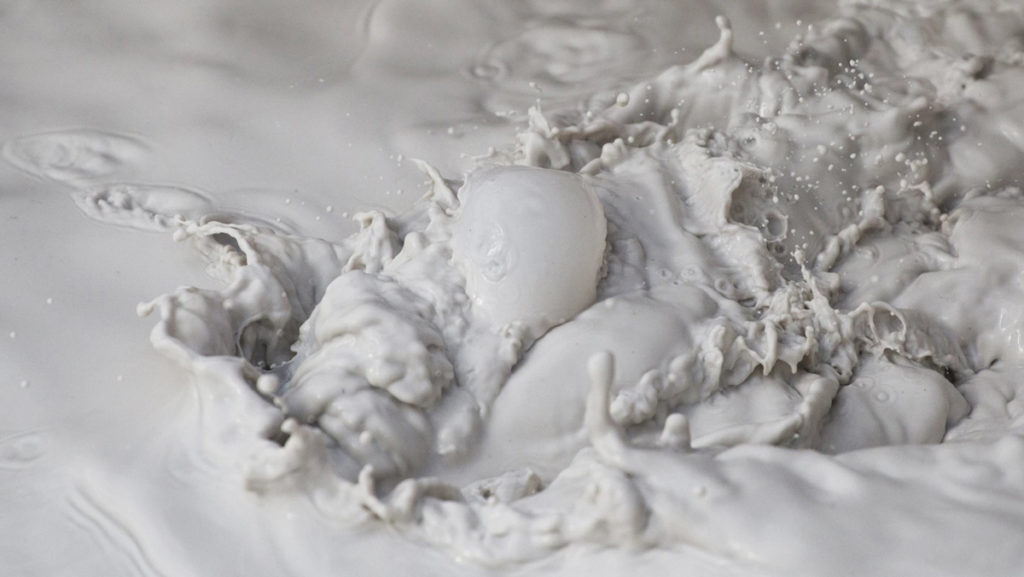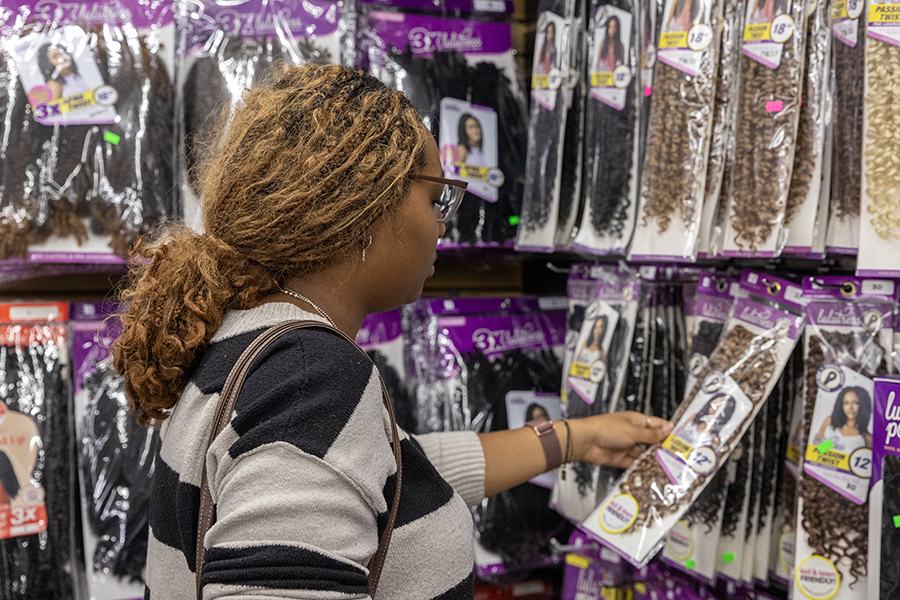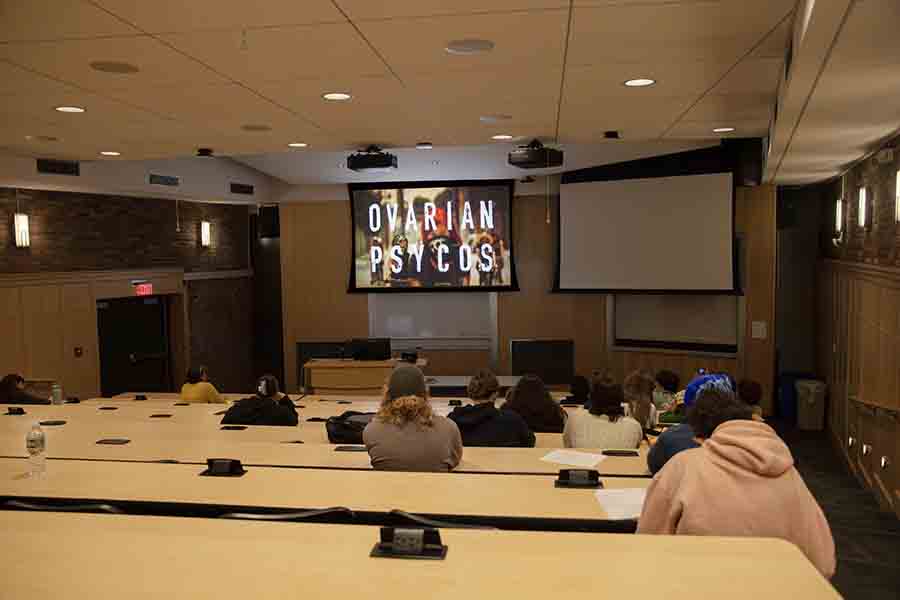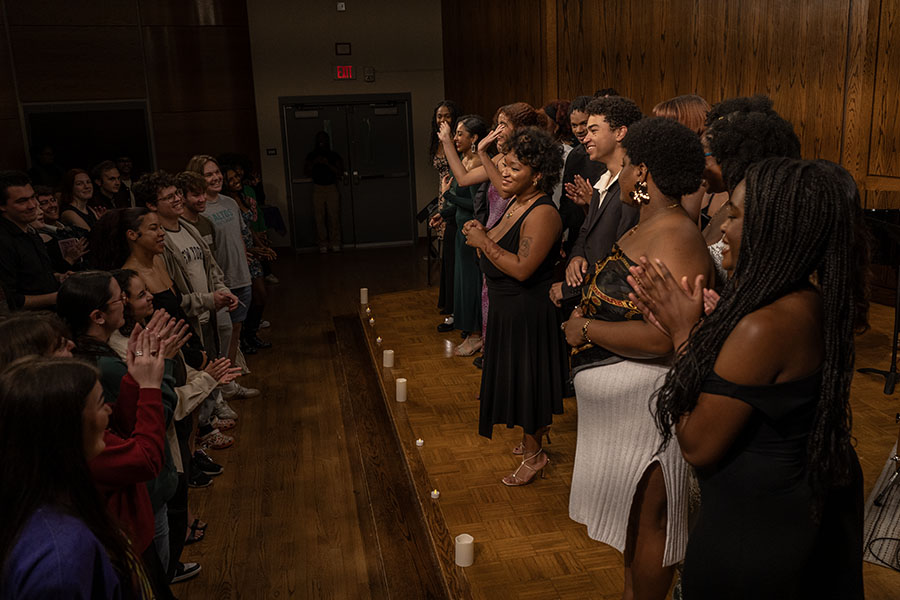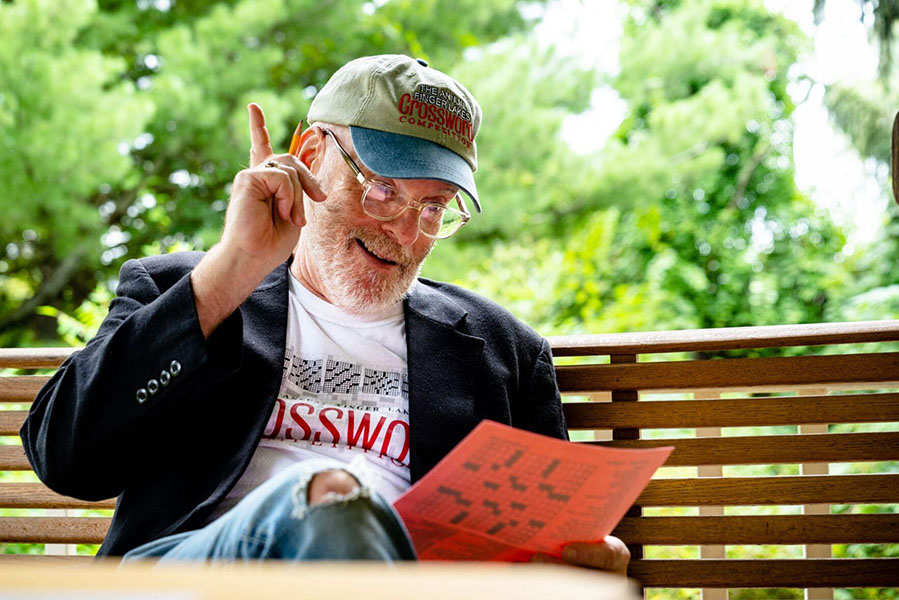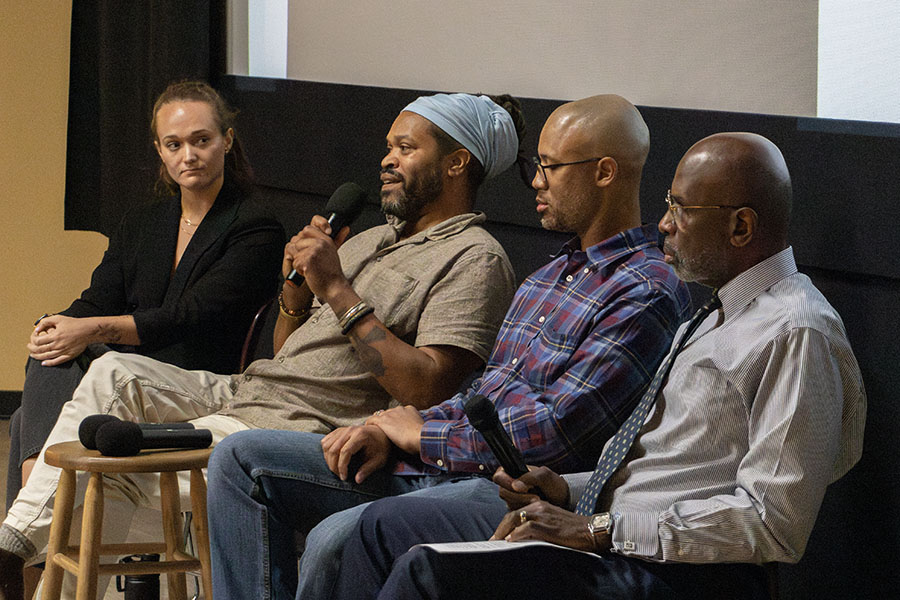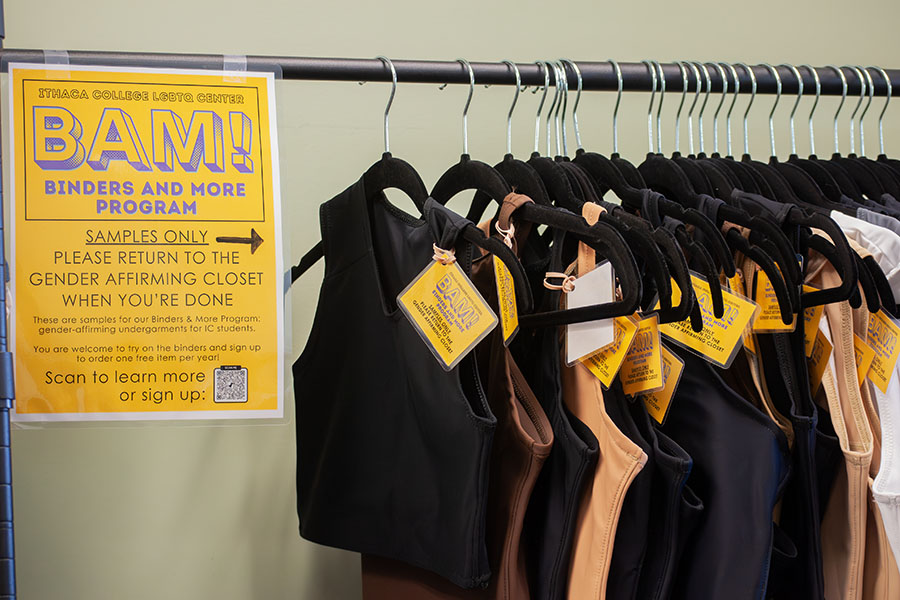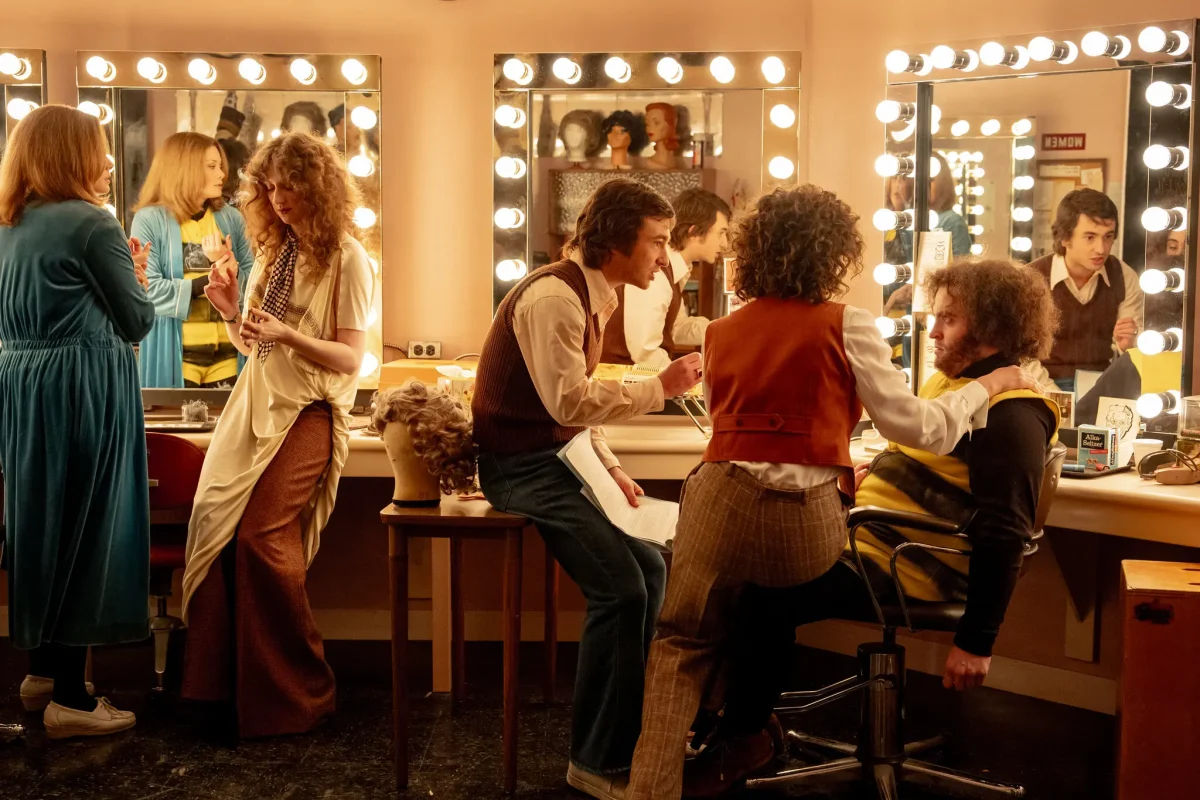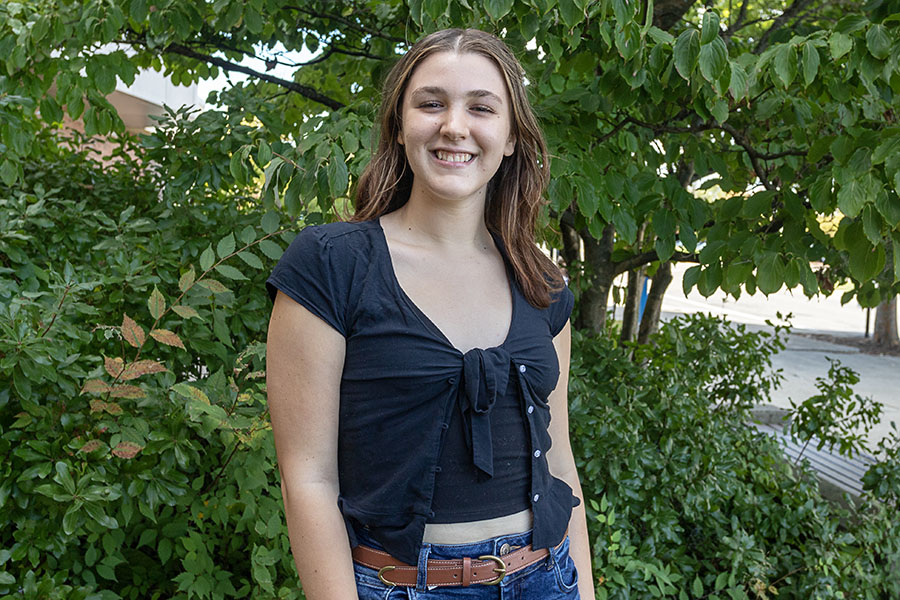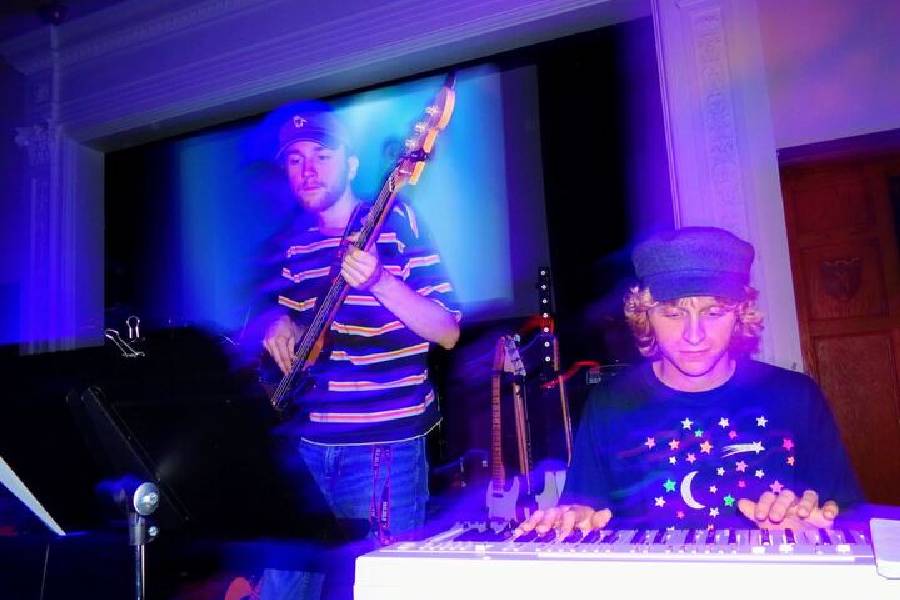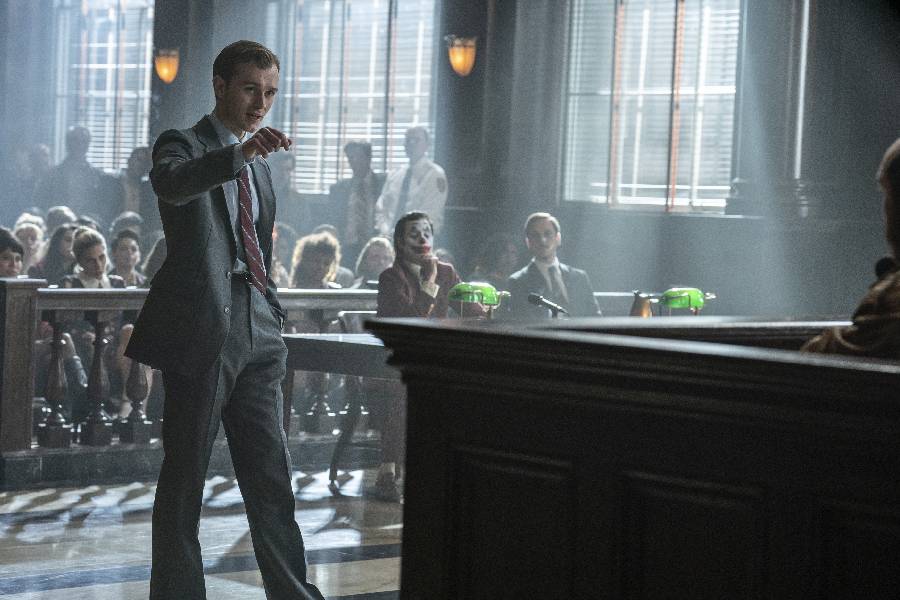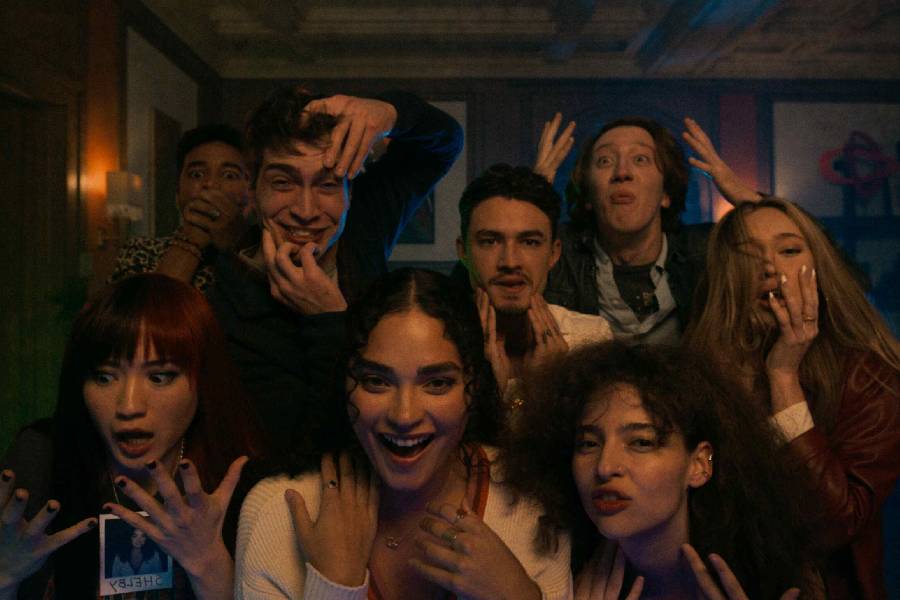Luke Bonadonna’s ’20 senior thesis, “home_was_here,” is a vivid, 32-foot-long collage, screen printed on landscaping fabric. Over the past year, Bonadonna worked at a studio in the Ceracche Center, listening to true crime podcasts as he mingled green, blue and yellow paint with printed phrases like “My_Room.PNG.”
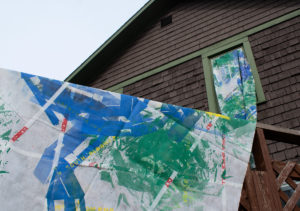
“Home_was_here” is part of “Again, again, again, & again,” the title of the annual senior showcase hosted by the Handwerker Gallery. If the coronavirus pandemic had not upended classes and events on campus, Bonadonna’s work would have been displayed in the gallery alongside fellow art majors Sam Unger ’20, Kate Rockefeller ’20 and Kalina Hertafeld ’20, as well as 11 other students previously in the Roy H. Park School of Communications. The show was instead moved to a digital exhibition, which is a rapidly growing replacement for in-person events.
“I’ve never been able to show work at the Handwerker before,” Bonadonna said. “I was excited to finally show my culmination of work at the Handwerker and do an in-person artist talk, so that was definitely one of the things going through my mind [when classes went online].”
Abby Haley ’20, the show’s curator, was in charge of creating the exhibition. She said that she worked closely with the art majors throughout her yearlong internship at the Handwerker Gallery. Academically, the showcase serves to highlight art majors’ senior theses, Haley said, and that was part of why she chose to pursue a digital replacement for the exhibition. The showcase also allows nonart majors to submit their work to have them displayed.
Haley also organized the marketing materials of “Again, again, again, & again” and worked with Mara Baldwin, director of the Handwerker Gallery, to create the website for the showcase. On the website, viewers can read Haley’s curatorial essay, which details the works on display in relation to the coronavirus pandemic.
“During this moment of great uncertainty, I urge you to look for the familiar,” she wrote. “We are still creating routines, still
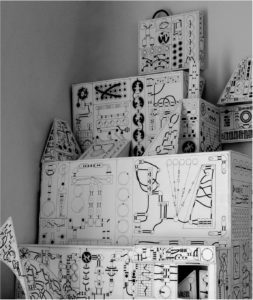
seeking out human connection and creative outlets, turning new ideas over in our heads, finding inspiration in monotony, still learning, still growing, still changing — again, again, again and again.”
Unger had worked on his project since the start of Fall 2019. He said he developed the idea to create a series of foam structures reminiscent of outdated technology. Hertafeld’s photography examines household objects through obscure angles to challenge the viewer’s perception. Rockefeller’s pastel portraits concentrate on simplicity and “senescence,” which is the title of her collection.
Bonadonna said his thesis explores his memories of the houses he’s lived in. He returned to his hometown for spring break and stayed when classes were put online for the rest of the semester. He said that being in the home that inspired his thesis strengthened the work even while separated from Ceracche.
Rockefeller said she had a similar experience. Among images of snails and fungi, she painted her parents for her project, a decision that she made after her father was diagnosed with Alzheimer’s disease earlier this year. She currently lives with them in Watertown, New York.
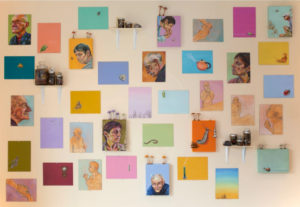
“[It] started me thinking about the time we have left and thinking about time in this new way of really living patiently and thoughtfully in the present because the future is unknown,” she said. “Being forced to work in the same environment that I’m trying to describe, … it’s hard to be in the grief that you’re trying to describe and talk about.”
Photography from Alisha Tamarchenko ’20, a documentary studies major, is in the digital exhibition. Tamarchenko’s pictures capture the mudpots — bubbles created in the surface of mud when thermally heated water rushes through — at Yellowstone National Park.
Tamarchenko said that she took the photos on a family vacation in summer 2018. She shot the mudpots alone for hours, waiting for them to boil to capture the rising mud.
“I think it’s really exciting to use photography as a medium as a videographer because … you’re focusing on the meaning of a single thing, so it was more about capturing a moment versus a series of moments,” she said.
Haley said that creating an online exhibition also gives nonart majors like Tamarchenko a space to display their work.
“I was like, ‘I don’t even have a physical show,’” Haley said. “‘I’m going to do all this work, and there’s not really going to be any payoff at all.’ And I was just so wrong. … It’s so nice to see something so beautiful come out of such a hard time, which is definitely what I needed. And I was grateful that other people experienced that in a similar way.”
Tamarchenko said that although she wishes she could have celebrated the gallery in person, she is grateful the event was replaced with something virtual.
“It’s definitely sad to see so many events … with all of us coming together and celebrating our work in person to be then moved online,” she said. “I think the advantage of having a virtual space is that then everyone can access it. It’s something that I can send to my grandparents in Florida, to my parents, to different family members all around the world.”
Editor’s Note: Tamarchenko was previously multimedia editor at The Ithacan.


